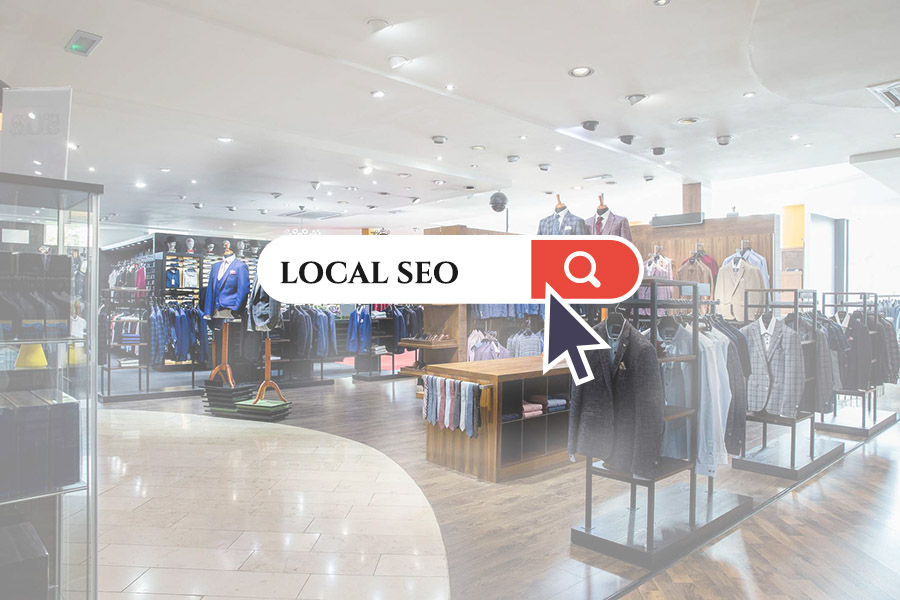

Table of Contents
Search Engine Optimisation (SEO) is a branch of digital marketing that has been around for over 15 years.
It is a style of optimizing your online content especially your website so that it is more visible on search engines especially on the first page of a search result for searches on a certain keyword.
SEO is the process of using strategies, tactics or techniques to increase the number of visitors to a website by targeting a high ranking placement or position in the search engine result page of search engines like including Google, Bing, Yahoo, and other search engines.
Search Engine Optimisation improves search engine rankings, Authority is usually measured by evaluating and analyzing the number of quality of links from other web pages.
There are two main types of SEO namely:
- Local SEO
- Organic SEO
Difference between Local SEO and Organic SEO
1. Local SEO
Local SEO is the process of optimizing your website (online presence) to engage more with local people when they make local searches. This kind of search engine optimisation is a branch of SEO that concentrates on improving a website so it can be made available in local search results. These searches take place on Google, Bing, Yahoo and other search engines.
2. Organic SEO
Organic SEO refers to the methods used to get high placement or ranking on a search engine result page (SERP) in unpaid, algorithm-driven results on a given search engine. In other ways, Organic SEO simply means ranking high for your intended search terms on various search engine result page without paying the search engine company for the replacement.
Organic SEO approaches rely majorly on the relevancy of the content.
Boosting keywords, writing high-quality content and back-linking are all ways to improve a site’s page rank.
Factors That Contribute To SEO Rankings
1. Google My Business
Google My Business is a massive part when it comes to Local SEO. Several potential customers will find your business for the first time, thanks to Google My Business listing and then decide if they are going to patronize you. A verified Google My Business listing will help improve your ranking. You need to make your Google My Business listing owner verified so you can include all the information your potential customers will need. After claiming your listing, you can add photos. Photos tell more story to the people who are searching for businesses like yours. You can also your Google My Business listings by earning customer reviews. Reviews build trust. When you have good reviews Google recognizes it and boost that business higher. When providing Google with information about your local business, it should be accurate and up to date. This also contributes to boosting your ranking.
2. Links
The roles of links in boosting the ranking of your website cannot be overstated. When another site links to your site, it drives traffic to search engines that the site trusts you. The higher the quality of the links, the higher the positive impact on your rankings. High-quality links improve the integrity and trustworthiness of your website and with high-quality links comes your authority in your niche industry and this builds up your credibility. When you are seen as an authority, people will trust the quality of your work.
When you send outbound links to reliable external websites you help you’re your website visitors find more information in what they are interested in. It also proves to search engines that you are providing solid information that can be supported by your website’s content, shows you are a credible source of information. Link building is a primary approach for improving your local ranking. When establishing links for your website that you should consider:
- Inbound Link Quality: This tells Google your website is available so people can find it.
- Local Relevant Domain inbound Links: Google attaches relevance to links from close by sources
- Quality of Link: More high authority links you have the better your website will rank
3. Keywords
Selecting keywords is an important step because they determine where you will appear in the search results. When searches are made keywords make it possible for them to appear in certain search results. If you want to be seen in search results that will bring lead that is interested in your business. You have to choose the right keywords. For you to find relevant keywords for your SEO listing, you need to conduct keyword research this will help you find the perfect keywords for your listing.
When these keywords have been generated, the next thing is to have them integrated into your website. When conducting keywords research it is advisable to stick to long tail keywords. Long tail keywords are the keywords that contain 3 or more words. One of the benefits of using long tail keywords are specific, so they bring relevant traffic to your website. You will get leads that are particularly looking for your business.
By choosing the right keyword your business appears in the more relevant search result.
4. Content
According to a Search Quality Senior Strategist at Google, Andrey Lipattsev, content is one of the most important Google ranking factors. SearchMetrics research made us know that Google evaluates content according to its relevance and not by including individual keywords. When creating content you should know that quality content beat quantity content every time i.e. always focus on value and not on word count. There is a set standard for the number of words a content must have. It depends on the subject – each content should always have enough words to expatiate the subject of discussion. However, there’s a correlation between Google’s high ranking content and content length.
5. User Experience
How visitors interact with your website is crucial to your rankings. Your visitor behavior sends signals to Google, these signals demonstrate if your website is useful for visitors or not. You want to ensure that your visitors have a positive user experience so they can spend more time on your website since this usually leads to a positive outcome.
User Experience Signals
- Click Through Rate (CTR): This is the rate at which people click on the link to your website. The first three results on the search engine results page are always higher than any other.
- Bounce Rate: Bounce rate is a negative effect you need to be aware of. Bounce rate is the percentage of people that end up in your site and immediately leave
- Call To Actions (CTA): You should have a strong call to actions that tells your visitor what next should be done. This increase the time spent on your website and decrease bounce rates.
- Page Speed: When your page load slowly it increases your bounce rate. Users don’t like slow loading websites.
- Responsive Design: Your website should have a responsive design so it can always adopt irrespective of the device being used to visit.
There has been a hot argument on this topic and metrics. Experts with different opinions all coming together and saying whether or not this metrics actually correlate to rankings. But in the end, it doesn’t matter if it does or it doesn’t, your goal as a business or website owner should be improving your website as Google algorithm for ranking changes every time, you can’t say for sure what matters and what doesn’t.
Join our list
Subscribe to our mailing list and get interesting stuff and updates to your email inbox.


